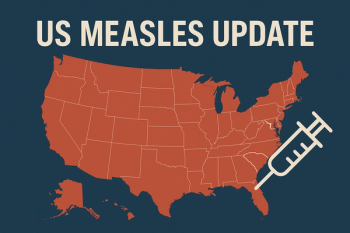
CDC Publishes Additional Findings Regarding 2016 Elizabethkingia Outbreak
These findings discredit previous allegations that this outbreak was the cause of one source and that the number of cases is higher than that identified in previous years.
Last year, a
Although Elizabethkingia is not usually harmful, some individuals may be more susceptible to infection than others; this includes those with diabetes mellitus, alcohol dependence, chronic renal disease, immunocompromising illnesses, those receiving immunosuppressive treatment, and more. This particular outbreak started in Wisconsin in early 2016, and the state’s Department of Health Services notified neighboring states of the ongoing identification of cases in February of that year.
Following this, healthcare providers and laboratories in Illinois were charged with gathering all E. anophelis isolates from the past two years and sending them to the Illinois Department of Public Health. Of those that were collected, 12 were sent to the CDC for testing, 11 (from 10 patients) of the isolates tested positive for the bacteria. An article published in Morbidity and Mortality Weekly Report in early December
Of those individuals who tested positive, seven were male, and the overall average age was 68 years. According to previously collected data, between January 2012 and May 2016, 77 patients in 15 Illinois facilities were reported to have tested positive for E. anophelis, which totals out to an average of around 17 infections per year, and about 5 per facility. This shows that although only 10 individuals were identified to have acquired infection with E. anophelis, this number is notably higher than average; CDC
However, this has not been the first Elizabethkingia outbreak to hit Illinois. According to the CDC, healthcare facilities across Illinois reported three previous outbreaks (between 2008 and 2013) that were caused by a different strain of the pathogen, Elizabethkingia meningoseptica. After sending isolates from these outbreaks to the CDC for further testing, it was found that the pathogens behind these outbreaks were actually, in fact, of the anophelis species.
According to the CDC, due to a “lack of common facility exposure among patients,” previous allegations that this outbreak was the cause of one source and that the number of cases is higher than that identified in previous years is untrue, according to the new findings published in MMWR. The article concludes, “Instead, this more likely represents ongoing sporadic infection among critically ill patients. Of note, after the investigation was completed, additional genetic analysis conducted by CDC indicated that one of the isolates initially identified as part of the cluster had a distinct PFGE pattern and by WGS, differed from the cluster genomes by 160—170 SNPs.”
Newsletter
Stay ahead of emerging infectious disease threats with expert insights and breaking research. Subscribe now to get updates delivered straight to your inbox.



















































































































































































































































































